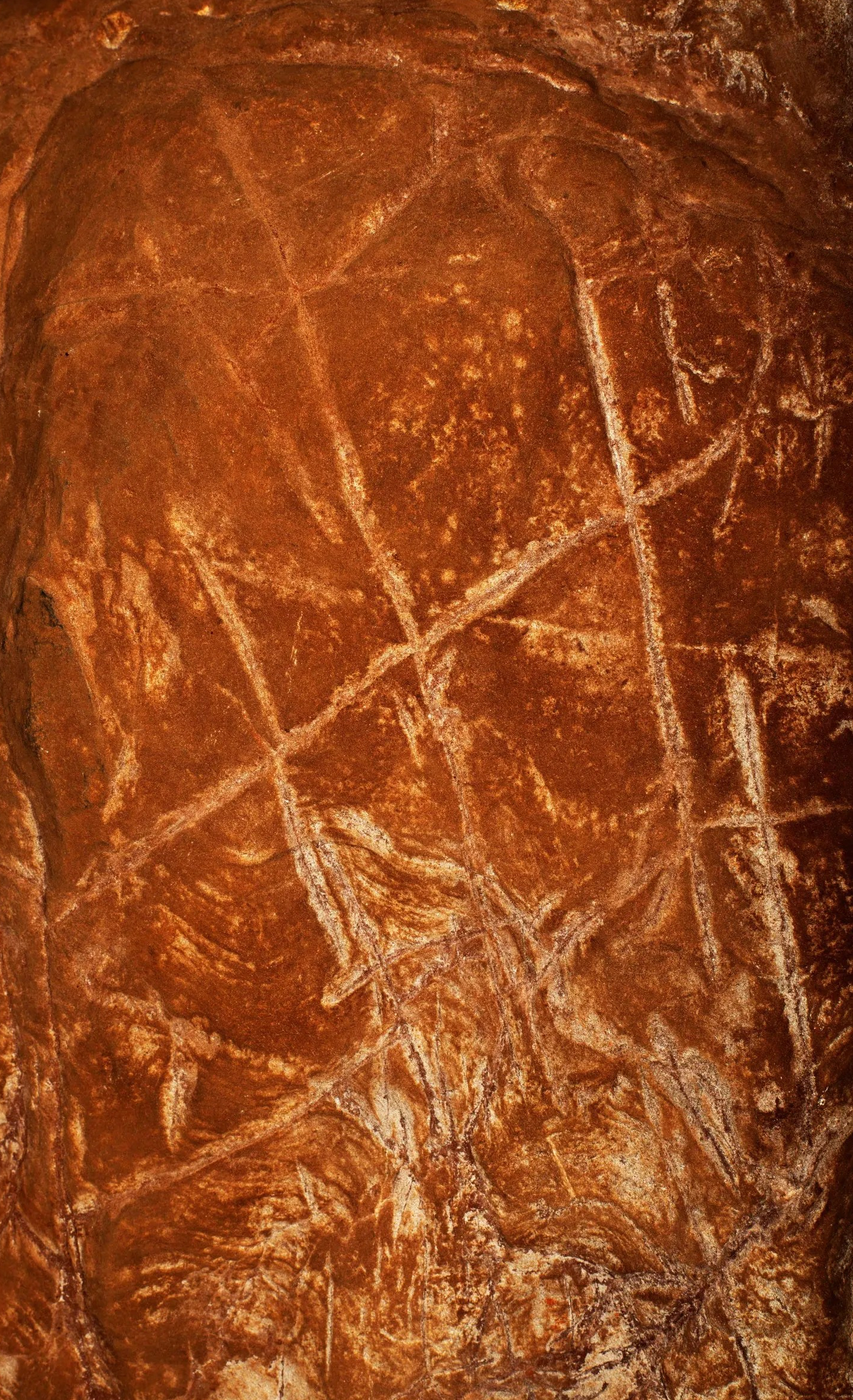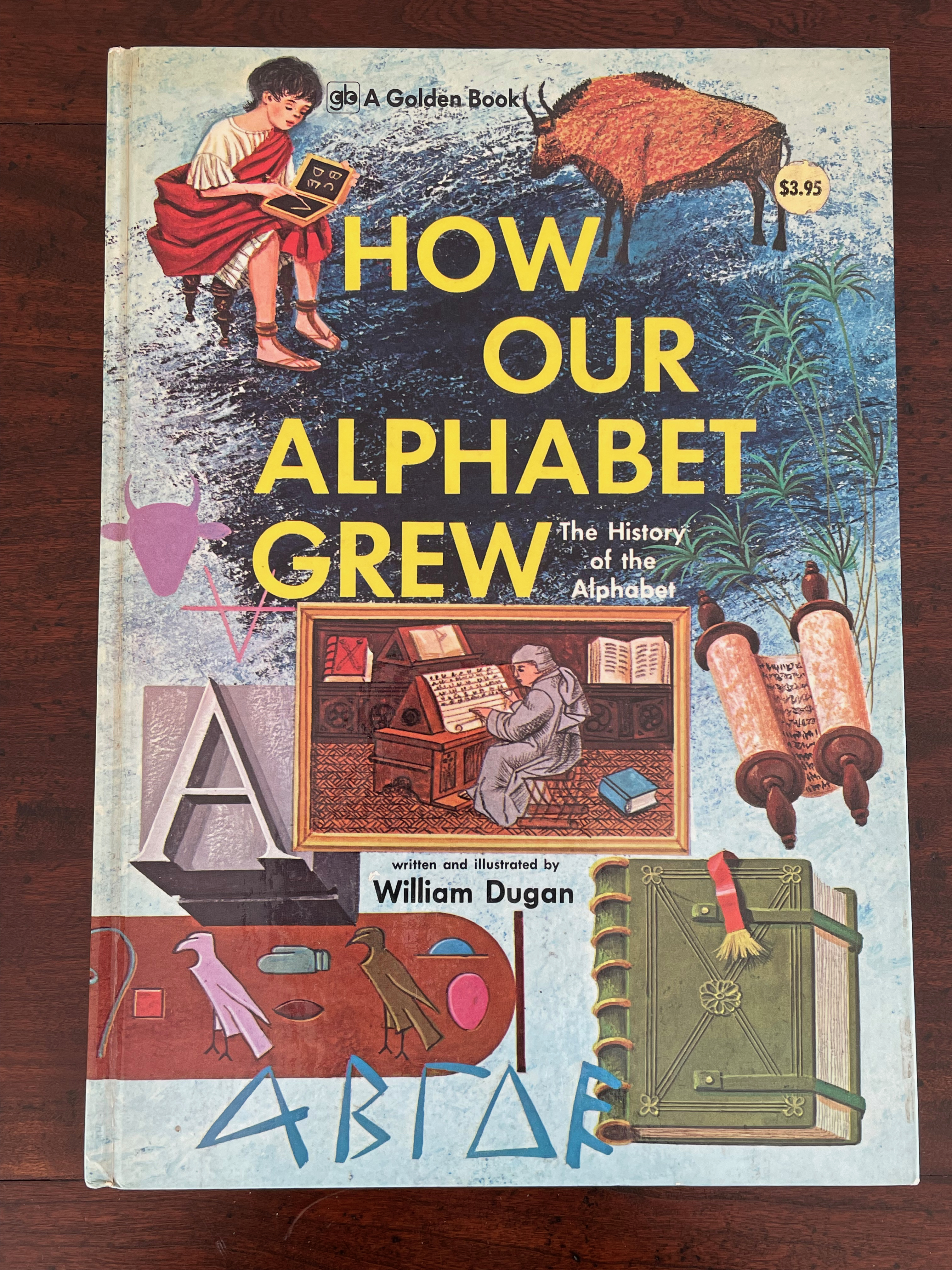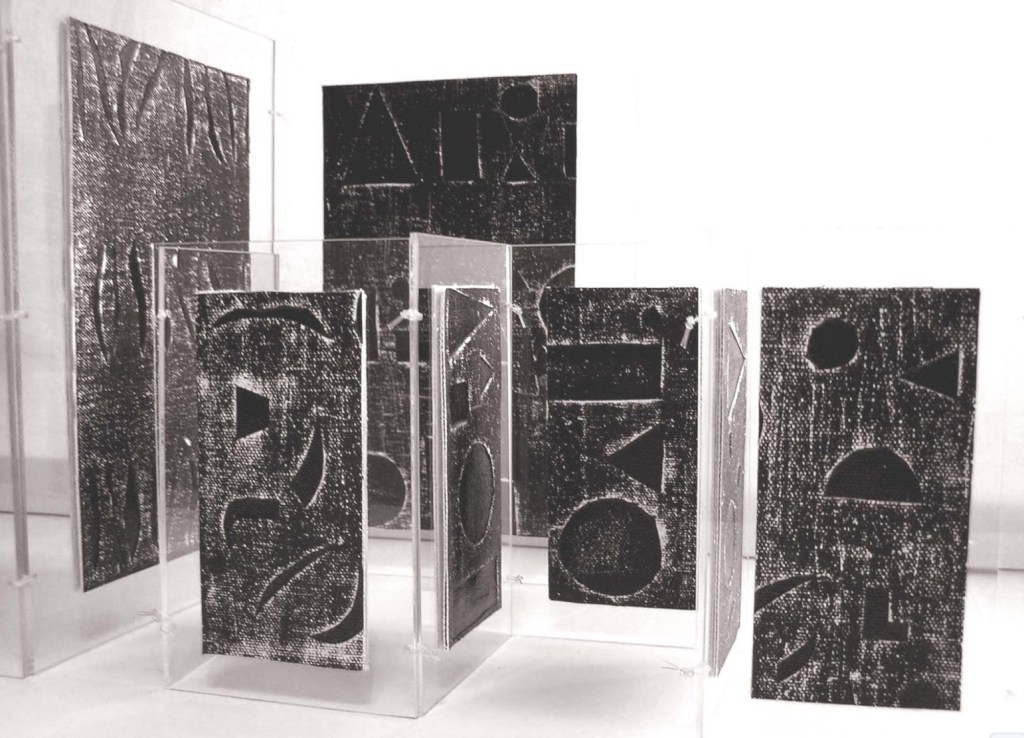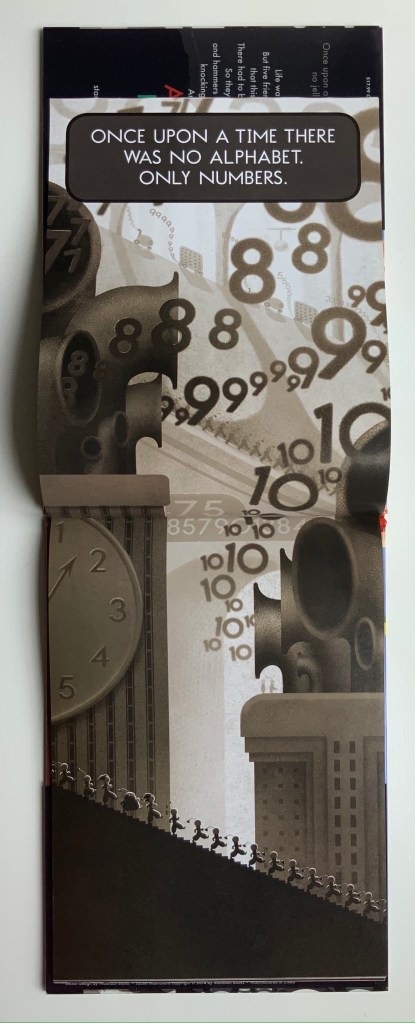Where did the alphabet come from? The ancient Egyptians claimed that Thoth brought writing to us; the Babylonians, Nebo; the Sumerians, Nabû; the Greeks, Hermes or Zeus; the Norse, Odin; the Hindus, Ganesh; the Mayans, Itzamna; in the Bible, God through Moses; and in the Qur’an, Allah. (Flanders in Bibliography)
For millennia, it was a mystery. Over the last three centuries, anthropologists, archaeologists, historians, linguists and paleographers have agreed general lines of explanation. One line starts from cuneiform (wedge-shaped marks on clay) used in the 4th millennium BCE in Sumer for accounting and administrative purposes. In the 3rd millennium BCE, some cuneiform glyphs came to represent Akkadian and Hittite language sounds. The other line starts from a Semitic consonantal script used in the 2nd millennium BCE in the Levant. In this pre-alphabet, shapes for sounds started more directly with the shapes of things, and over time, the shapes turned into symbols for the initial sounds of the thing depicted.

So, a stylized drawing of an ox’s head that was used for the word for ox turned into the Phoenician glyph 𐤀representing the initial sound of ‘aleph, the Phoenician word for ox. After the Phoenician alphabet reached Greece and beyond, the glyph tilted to become A, representing any instance of the sound /a/. The Greeks changed the glyph’s name from ‘aleph to alpha as well as the name of the glyph 𐤁 from bēt to beta, from which comes our word “alphabet”.
In the last decade, however, the earliest point of the alphabet’s symbol-making origin may have slipped back into mystery with the discovery of carvings in South African caves, possibly the work of Homo naledi, a much smaller-brained hominin species whose fossils have been dated to between 236,000 and 335,000 years ago. (Wong in Bibliography)


Left: Bolter, D.R. et al. 2020. “Immature remains and the first partial skeleton of a juvenile Homo naledi”. PLoS One 15 (4). CC BY-SA 4.0. Right: Berger, Lee R. et al. June 2023. “241,000 to 335,000 Years Old Rock Engravings Made by Homo naledi in the Rising Star Cave system, South Africa”. bioRxiv. CC BY-SA 4.0.
Such mysteries and explanations alike have been a source of inspiration for children’s books and artist’s books. [Links in the captions will take you to more images and details.]





Clockwise: Tommy Thompson’s The ABC of Our Alphabet (1952), William Dugan’s How Our Alphabet Grew (1972), Tiphaine Samoyault’s Alphabetical Order (1998)*, Don Robb and Ann Smith’s Ox, House, Stick (2007)* and Renzo Rossi’s The Revolution of the Alphabet (2009) show the staying power of illustrated reference books for older children as a vehicle for alphabet history.
Chloë Cheese, a talented artist and illustrator, further enlivens Rudyard Kipling’s tale “How the Alphabet was Made” (1983)* with a colorful interpretation of the black-and-white drawings that Kipling originally included in the manuscript for his daughter Josephine. Another version can be found below in the Online Exhibition Bonus!


Inside and out, Cari Ferraro’s The First Writing (2004)* echoes early cave paintings and challenges the administration theory of writing’s origins.
In the Bodleian exhibition but not shown here due to rights issues: Abe Kuipers’ Letters (1983).
Helen Malone’s Alphabetic Codes (2005)* consists of separate plexiglas accordion books that open into a sculptural view of the abstract markings that have emerged in the search for the alphabet’s origins.


James Rumford’s There’s a Monster in the Alphabet (2002)* retells Herodotus’ account of how the Phoenicians brought the alphabet to Greece. Rumford has also written and illustrated children’s books on the invention and process of papermaking, Gutenberg, Sequoyah (inventor of the Cherokee syllabary), Champollion (decipherer of the Rosetta Stone), Chadian arabic, Chinese explorers and much else to celebrate languages and cultures.
Letter by letter, Dave Wood’s Alphabetica (2002)* celebrates the alphabet with a multitude of calligraphic and letter-form styles. Wood integrates inscribed captions that show and comment on the development of each letter.

Online Exhibition Bonus!

The letter B derives from the Phoenician word bēt (meaning “house”). Lanore Cady’s Houses and Letters (1977) calligraphically displays every letter’s development. Inscribed verses aim to link the letters and houses depicted in Cady’s watercolors.

Slipcased, beautifully clothbound and well-designed, Lyn Davies’ A is for Ox (2006) belongs to the fine press tradition. Despite its brevity, A is for Ox conveys just as much as many lengthier books on the origins of the alphabet. See the Bibliography for additional reference works on the alphabet’s history.
William Joyce’s The Numberlys (2014) takes an inventive approach to the theory that numbers preceded letters and led to the alphabet’s invention. The five characters who are the story’s heroes (representing the five vowels?) first made their appearance online in an interactive app. Ironically, the app is no longer available. It is perilously stored on an early iPad in the Books On Books Collection and has been “backed up” by this print version.


Gerald Lange’s The Neolithic Adventures of Taffi-mai Metallu-mai (1997) reproduces Kipling’s own drawings for “How the Alphabet was Made” and includes “How the First Letter Was Written”. With the variety of Japanese papers, watercoloring of the text leaves, handsetting of type, letterpress printing and tortoise shell edge-sewn binding, this represents a special strain of artist’s book.
David Rault’s ABC of Typography (2019) traces 3,500 years of letters and type from pictographs and cuneiform through Roman lettering and Gutenberg to the Bauhaus and beyond. What distinguishes it from the works above and other illustrated reference works in the Books On Books Collection is its origin in the Franco-Belgian tradition of les bandes dessinées (BDs), which the French and Belgians call la Neuvième Art (“the Ninth Art”).


Painter Ben Shahn’s The Alphabet of Creation (1954) presents a Hebrew abecedary by recounting the story of how the twenty-two letters responded to God’s invitation to make their cases for being the first letter of the alphabet.
Renowned as an expert in Hebrew palaeography, Ada Yardeni was also known for her art, calligraphic hand and storytelling. Combining all these talents, A-dventure-Z’ (2003) crosses the boundaries of scholarly reference, children’s book and artist’s book.
